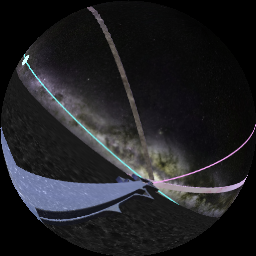I'm working in an old application (DX9-based) where I don't have access to the C code, but I can write any (model 3.0) HLSL shaders I want. I'm trying to mess with some cube mapping concepts. I've gotten to the point where I'm rendering a cube map of the scene to a cross cube that I can plug directly into ATI cubemapgen for filtering, which is already easier than trying to make one in Blender, so I'm pretty happy so far. But I would like to do my own filtering and lookups for two purposes: one, to effortlessly render directly to sphere map (which is the out-of-the-box environment mapping for the renderer I'm using), and two, to try out dynamic cube mapping so I can play with something approaching real-time reflections. Also, eventually, I'd like to do realish-time angular Gaussian on the cube map so that I can get a good feel for how to map specular roughness values to Gaussian-blurred environment miplevels. It's hard to get a feel for that when it requires processing through several independent, slow applications.
Unfortunately, the math to do lookups and filtering is challenging, and I can't find anybody else online doing the same thing. It seems to me that I'm going to need a world-vector-to-cube-cross-UV function for the lookup, then a cube-cross-UV-to-world-vector function for the filtering (so I can point sample four or more adjacent texels, then interpolate on the basis of angular distance rather than UV distance.)
First, I'm wondering if there's any kind of matrix that I can use here to transform vector to cube-cross map, rather than doing a bunch of conditionals on the basis of which cube face I want to read. This seems like maybe it would be possible? But I'm not really sure, it's kind of a weird transformation. Right now, my cube cross is a 3:4 portrait, going top/front/bottom/back from top to bottom, because that's what cubemapgen wants to see. I suppose I could make another texture from it with a different orientation, if that would mean I could skip a bunch of conditionals on every lookup.
Second, it seems like once I have the face, I could just use something like my rendering matrix for that face to transform a vector to UV space, but I'm not sure that I could use the inverse of that matrix to get a vector from an arbitrary cube texel for filtering, because it involves a projection matrix-- I know those are kind of special, but I'm still wrapping my head around a lot of these concepts. I'm not even sure I could make the inverse very easily; I can grab an inverseProj from the engine, but I'm writing to projM._11_22 to set the FOV to 90, and I'm not sure how that would affect the inverse.
Really interested in any kind of discussion on techniques involved, as well as any free resources. I'd like to solve the problem, but it's much more important to me to use the problem as a way to learn more.








